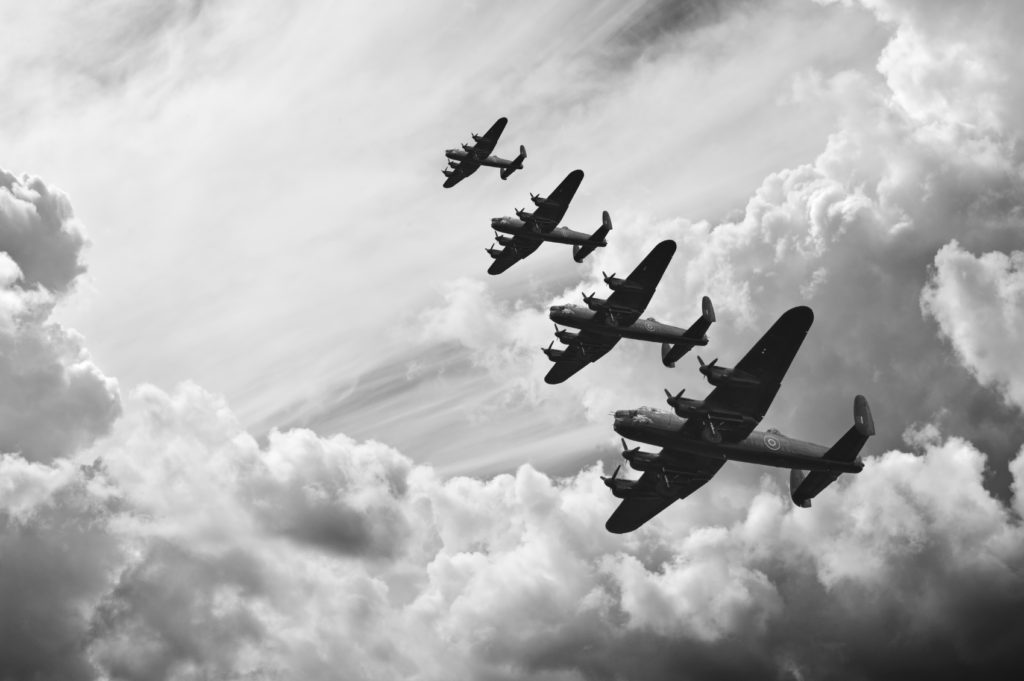Table of Contents
All About the War
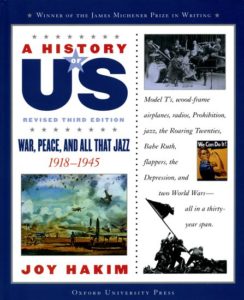 |
In Joy Hakim’s outstanding A History of US series, War, Peace, and All That Jazz (Oxford University Press, 2007), covers the period from 1918 to 1945, with plenty of well-presented information and human interest. Highly recommended. For ages 11-14. |
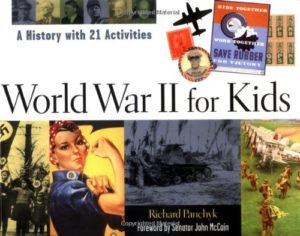 |
By Richard Panchyk, World War II for Kids (Chicago Review Press, 2002) covers the war from Hitler’s rise to power in 1933 to the bombing of Hiroshima and the surrender of Japan in 1945. Included are timelines, maps, period photos, and 21 hands-on projects and activities. Play a rationing game, break a military code, or stage your own radio adventure series. For ages 9 and up.
|
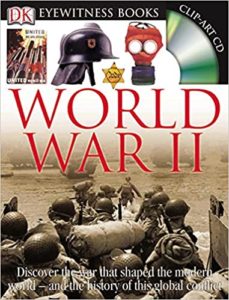 |
Simon Adams’s World War II (DK, 2014), one of the graphically creative Eyewitness series, is filled with wonderful photos of people and artifacts. Each double-page spread covers a different aspect of the war, such as “In the German army,” “The Battle of Britain,” “Codebreakers,” “D-Day invasion,” and “A wartime childhood.” For ages 8-12.
|
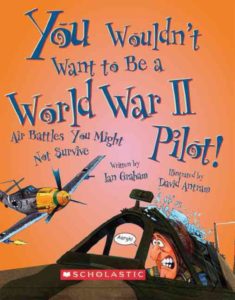 |
In the popular You Wouldn’t Want to Be series, see Ian Graham’s You Wouldn’t Want to Be a World War II Pilot! (Scholastic, 2009) and John Malam’s You Wouldn’t Want to Be a Secret Agent During World War II (Scholastic, 2010). All combine catchy second-person narration and humorous illustrations with substantive background information – and they’re masters of reverse psychology. Kids love them. For ages 8-12.
|
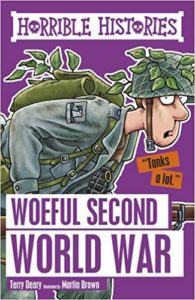 |
In Terry Deary’s Horrible Histories series, Woeful Second World War (Scholastic, 2016) is a comprehensive history of the war with a clever snarky text and a lot of the gicky memory-sticking facts that kids love. (Elephants run amok in the blackout. Meals of maggots.) In the same series, also see Deary’s The Blitzed Brits (2016). For ages 8-12. |
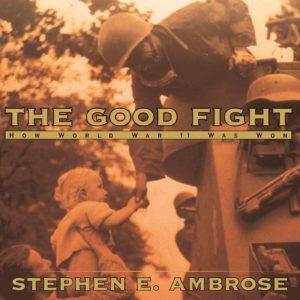 |
By historian Stephen E. Ambrose, The Good Fight: How World War II Was Won (Atheneum, 2001) is a chronicle of the war, illustrated with timelines, photographs, full-color maps, and Quick Facts boxes. A good introduction to World War II for ages 11 and up.
|
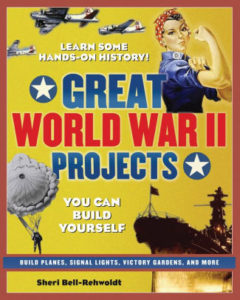 |
By Sheri Bell-Rehwoldt, Great World War II Projects You Can Build Yourself (Nomad Press, 2006) is divided in two parts: On the Home Front and On the Front Lines. Included are an annotated timeline, fact boxes, maps, period photos, and well-presented historical background information, plus many hands-on projects, among them making a papier-mache piggybank, a tabletop victory garden, a signal light, and a recruitment poster. For ages 9-12. |
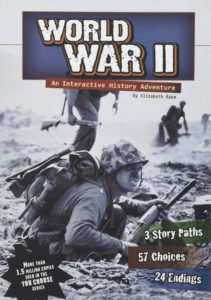 |
In the Interactive History Adventure series (Capstone Press), based on the experiences of real people, readers travel different paths depending on the decisions they make. Illustrated with photos and maps. Books with World War II themes include Attack on Pearl Harbor, World War II, and World War II on the Home Front. Exciting and informative reads for ages 8-11.
|
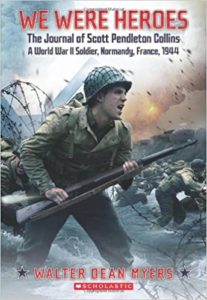 |
By Walter Dean Myers, We Were Heroes: The Journal of Scott Pendleton Collins (Scholastic, 2012) is the first-person story of a 17-year-old soldier in Normandy, France, in 1944, during the D-Day invasion. For ages 10-14.
|
|
The Children’s War is an insightful journal of historical fiction and non-fiction books for children and teenagers set in and around World War II, along with historical background information, illustrations, “and other interesting bits.” Included is a chronological index. |
|
|
World War II from the Ducksters Education site has an overview of the war, and individual photo-illustrated pages on prominent battles, events, and people. |
|
|
From History.com, many illustrated topics on World War II, among them Nazi Party, Benito Mussolini, American Women in world War II, the Manhattan Project, Midway, and more. |
|
|
World War II from history teacher Mr. Donn is a collection of lesson plans, activities, and information for a range of ages. |
|
|
The Stanford History Education Group has a large number of lesson plans, categorized by time period, for both US and World History. Several cover World War II and 1940s topics, such as Japanese-American incarceration, the atomic bomb, and Nazi propaganda. |
|
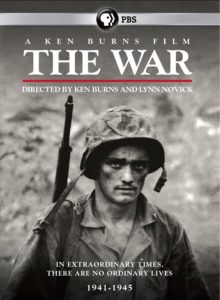 |
Ken Burns’s The War is a seven-part PBS series on World War II, centered around the personal stories of those who lived through it. The website also has lesson plans and activities, and a Search and Explore database of period photographs and primary source documents.
|
|
What happened when and where? See this annotated and illustrated Timeline of World War II. |
|
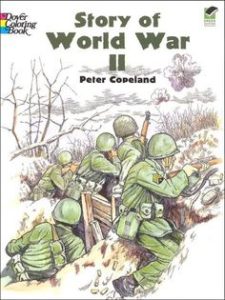 |
From Dover Publications, see Peter Copeland’s Story of World War II coloring book (2004) and Tom Tierney’s American Family of the 1940s paper dolls (1992). |
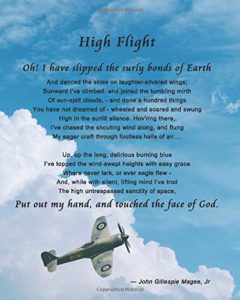 |
One of the most famous poems of World War II is “High Flight,” written in 1941 by John Magee, a nineteen-year-old Canadian Air Force pilot. Read the poem and a brief biography of Magee – who was killed in a training accident just before the bombing of Pearl Harbor – here.
|
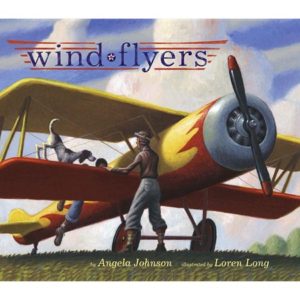 |
Angela Johnson’s Wind Flyers (Simon & Schuster, 2007) is a picture-book story of the Tuskegee Airmen, a band of undercelebrated World War II heroes. “Great-great-uncle was a wind flyer,” begins the young narrator. “A smooth wind flyer. A Tuskegee wind flyer…” For aged 5-9.
|
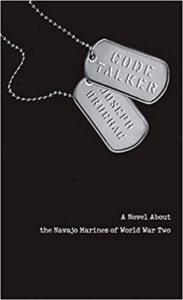 |
Joseph Bruchac’s Code Talker (Speak, 2006) is the story of young Ned Begay, a Navajo who became a World War II code talker, using his native language to confound the enemy. For ages 12 and up. Also by Bruchac, see Chester Nez and the Unbreakable Code (Albert Whitman, 2019) for ages 7-9. |
|
Want to learn Navajo? It’s available on Duolingo. |
|
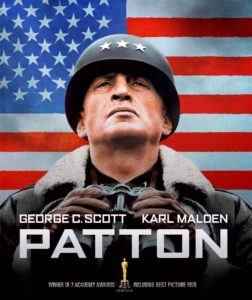 |
The 1970 movie Patton, starring George C. Scott as the controversial general, covers Patton’s career from North Africa through the invasion of Europe and the fall of the Third Reich. Rated PG.
|
|
Also see The Holocaust. |
